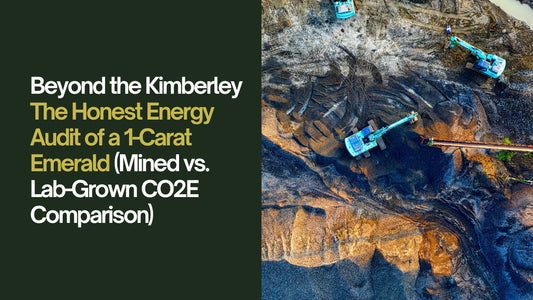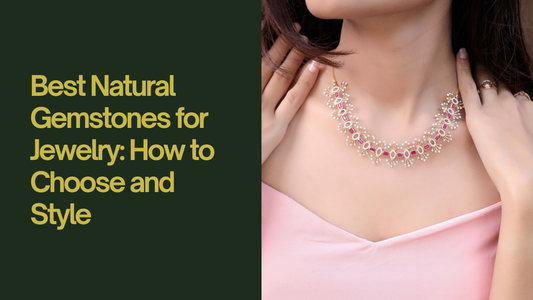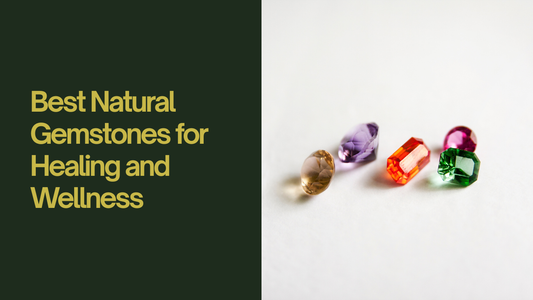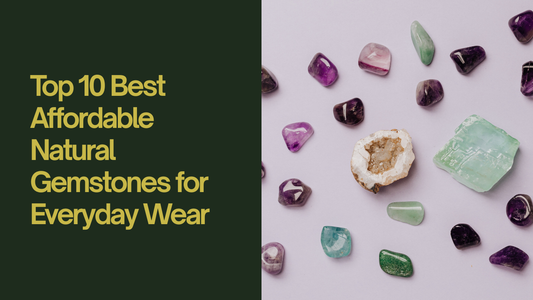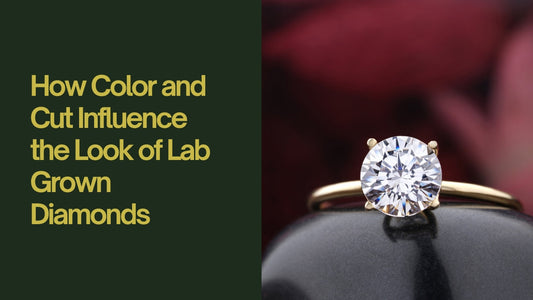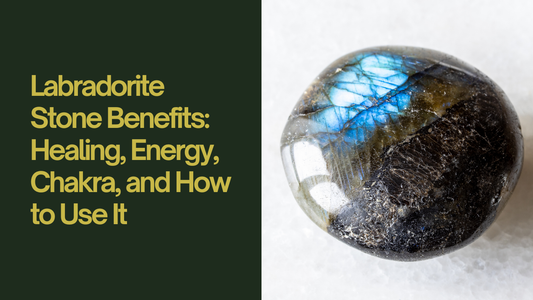
Synthetic vs. Natural Rubies: How to Tell the Difference
Rubies are one of the most beautiful and precious gemstones in the world. Their deep red color has fascinated people for centuries, and they are often called the "king of gemstones." But did you know that not all rubies are the same? Some rubies are natural, meaning they were created deep within the Earth over millions of years, while others are synthetic, which means they were made in a lab by scientists. Both types of rubies can be very beautiful, but there are ways to tell the difference between them.
Let’s explore the world of natural and synthetic rubies and learn how to tell them apart!
What Are Natural Rubies?
Natural rubies are formed deep inside the Earth under very high pressure and temperature. This process takes millions of years, and when the conditions are just right, corundum (the mineral that makes rubies) turns into the beautiful red gemstones we see today.
These natural rubies are found in places like Myanmar (Burma), Thailand, and Sri Lanka. Because they are formed naturally, they often have tiny inclusions inside them. Inclusions are like small marks or imperfections inside the stone. These inclusions make each natural ruby unique, like a fingerprint. However, these tiny marks usually don’t affect the beauty of the ruby, and in fact, they are one of the ways gem experts can tell if a ruby is natural.
What Are Synthetic Rubies?
Synthetic rubies are man-made rubies created in a lab. Even though they are made by scientists, they are still real rubies because they have the same chemical makeup as natural rubies. The difference is that synthetic rubies are created much faster in a lab, usually in just a few months.
Because they are made in controlled conditions, synthetic rubies often have fewer inclusions or marks than natural rubies. In fact, they can look almost perfect! This makes synthetic rubies less expensive than natural rubies because they are easier to produce. Even though they are real rubies, they don’t have the same rarity and special history as natural rubies.
How to Tell the Difference Between Synthetic and Natural Rubies
It can be difficult to tell the difference between a synthetic ruby and a natural ruby just by looking at them. Both types of rubies can be beautiful and have the same deep red color. However, there are a few ways that experts use to figure out if a ruby is natural or synthetic:
1. Look for Inclusions (Tiny Marks Inside the Stone)
- Natural Rubies: Natural rubies often have small inclusions or tiny marks inside the stone. These marks are formed naturally as the ruby grows in the Earth. When you look at a natural ruby under a magnifying glass, you might see tiny lines, dots, or bubbles inside the gem. These inclusions are completely natural and help gem experts identify the stone as a natural ruby.
- Synthetic Rubies: Because synthetic rubies are made in a lab, they usually don’t have many inclusions. They often look very clear or "too perfect." If a ruby looks flawless and has no inclusions at all, it might be a synthetic ruby.
2. Check the Price
- Natural Rubies: Natural rubies are rare and take millions of years to form, which makes them more expensive. The larger and clearer the ruby, the more valuable it is.
- Synthetic Rubies: Synthetic rubies are less expensive because they are made in a lab and are more common. If you see a very large ruby at a low price, it might be a synthetic ruby.
3. Color
- Natural Rubies: Natural rubies can have slight variations in their color. Some natural rubies are a lighter or darker red, while others might have hints of purple or pink in them. This is because the ruby formed naturally and was affected by different minerals in the ground.
- Synthetic Rubies: Synthetic rubies often have a more even color. They might have a bright, rich red color that looks almost too perfect. This is because the color is controlled in the lab where the ruby is made.
4. Lab Testing
If you are still unsure whether a ruby is natural or synthetic, you can take it to a gemologist (a person who studies gems). A gemologist can use special tools and tests to figure out if a ruby was made in nature or in a lab. They might use special lights or magnifying glasses to look inside the ruby for signs of how it was made.
Why Do People Choose Synthetic Rubies?
Even though natural rubies are rare and special, some people prefer to buy synthetic rubies. There are a few reasons for this:
- Lower Price: Synthetic rubies are usually less expensive than natural rubies, which makes them a great choice for people who want a beautiful red gemstone without spending a lot of money.
- Looks: Synthetic rubies can look just as beautiful as natural rubies. Because they are made in a lab, they often have a rich color and very few inclusions, which makes them look perfect to the naked eye.
- Ethics: Some people like synthetic rubies because they know exactly where they come from. Natural rubies are often mined in countries where working conditions are not always good. By choosing a synthetic ruby, some people feel more comfortable knowing their gem was made in a lab under safe conditions.
Why Do People Choose Natural Rubies?
On the other hand, many people love natural rubies because of their history and rarity.
- Rarity: Natural rubies are much rarer than synthetic rubies. Each natural ruby took millions of years to form deep inside the Earth. This makes them feel more special and unique.
- Natural Beauty: Many people love the tiny inclusions and unique color variations in natural rubies. These imperfections are what make each natural ruby one-of-a-kind.
- Value: Natural rubies often hold their value better over time. If you are buying a ruby as an investment, a natural ruby is usually worth more than a synthetic one.
Examples of Famous Rubies
There are many famous rubies around the world, and most of them are natural rubies because of their rarity and beauty. Here are a couple of examples:
-
The Sunrise Ruby: This is one of the most famous rubies in the world. It is a natural ruby from Myanmar and weighs 25.59 carats. It sold for over $30 million at an auction, making it one of the most expensive rubies ever sold!
-
The Carmen Lúcia Ruby: This is a famous natural ruby on display at the Smithsonian Museum in Washington, D.C. It is known for its rich red color and weighs 23.10 carats.
Conclusion
In the world of gemstones, synthetic and natural rubies are both real rubies, but they have important differences. Natural rubies are rare, valuable, and full of history, while synthetic rubies are more affordable and often look perfect. By learning how to tell the difference between them—whether by checking for inclusions, examining the color, or testing them in a lab—you can make sure you choose the right ruby for you.
Whether you choose a natural or synthetic ruby, both are beautiful gems that can make any piece of jewelry shine with a deep, rich red color!
